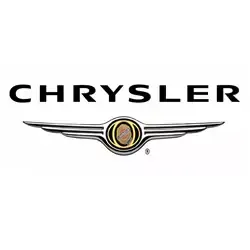Chrysler Grand Voyager Tire Pressure
Most common recommended tire pressure for Chrysler Grand Voyager is 35 psi based on year of production, trim and OEM tire size, but it maybe different for older models. It is imperative to confirm the exact tire inflation for your Chrysler Grand Voyager to ensure safety on the road. Always refer to your vehicle owner's manual for the correct tire pressure designated by vehicle's manufacturer.
Select your Chrysler Grand Voyager production year to see its recommended tire inflation.
| Model Year | Front Tires | Rear Tires |
|---|---|---|
| 2000 Chrysler Grand Voyager | 35 psi | 35 psi |
Recommended Tire Pressure for Chrysler Grand Voyager
Maintaining the recommended tire pressure for a Chrysler Grand Voyager is crucial for optimizing the vehicle's performance, safety, and fuel efficiency. The manufacturer's recommended tire pressure is carefully determined to ensure optimal contact between the tire and the road, enhancing the vehicle's handling and stability, especially at higher speeds or during sudden maneuvers. Proper tire inflation plays a significant role in minimizing tire wear, extending the lifespan of the tires, and preventing premature replacements. Under-inflated tires can lead to uneven wear, reduced fuel economy, and increased rolling resistance, while over-inflation may result in a harsh ride and uneven tire wear, particularly in the center tread area. Additionally, adhering to the recommended tire pressure can significantly reduce the risk of tire-related accidents caused by blowouts or loss of control. Moreover, proper tire pressure supports the ecological aspect by improving fuel economy, thereby reducing the carbon footprint associated with driving. For a Chrysler Grand Voyager, maintaining the correct tire pressure is essential for ensuring a safe, comfortable, and cost-effective driving experience, highlighting the importance of regular tire pressure checks as part of the vehicle's routine maintenance schedule.

All listed guides, data and/or calculations are for informational purposes only. TirePressure.com does not warrant or make any representations regarding the accuracy of or the results of the use of this information. Always refer to vehicle owner's manual for the correct tire pressure configuration.